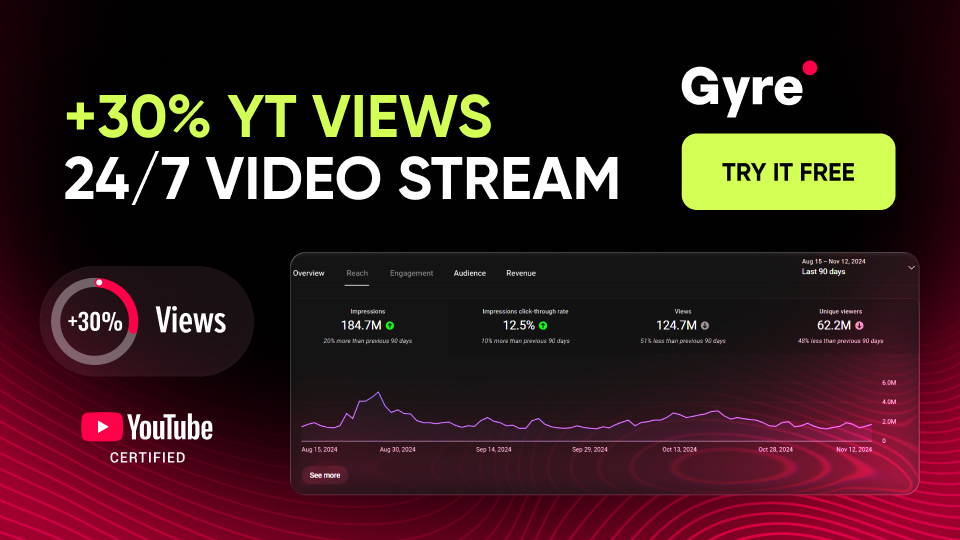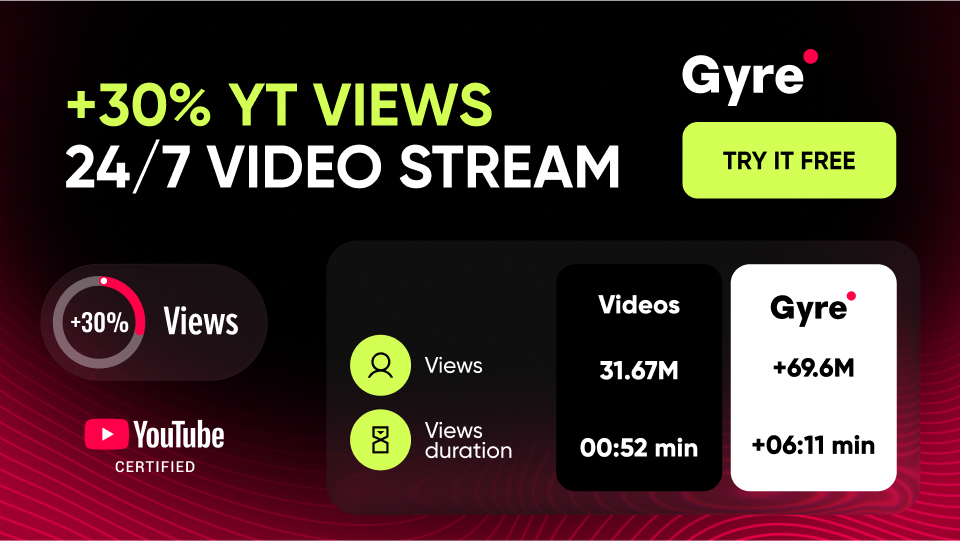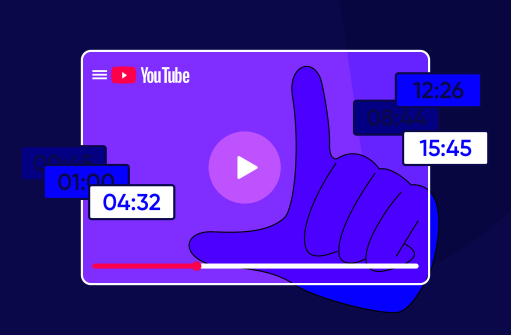Make the Most of What's Already Been Filmed
You don't have to start from scratch if you already have some content in a conventional format on your YouTube channel. In particular, we are talking about the long-form content vs Shorts transformation. Here’s how to make YouTube Shorts:
- Highlight the most interesting moments — these can be the most emotional scenes, surprising facts, funny moments, insights from interviews, or anything else that can hook the viewer in less than 3 minutes.
- Use your most popular videos. To do this, check your YouTube analytics to understand which videos best retained the viewer’s attention.
- Adapt videos to vertical screen orientation – here, it is essential to consider the technical characteristics of Shorts, namely that their format is always 9:16.
Make It Hard for the Viewer to Look Away
Now, more about how to capture the viewer's attention from the first seconds when you create YouTube Shorts:
- Start with a touching scene or question – anything that evokes emotions at first glance.
- Use dynamic transitions and add visual accents to enhance the desired emotions.
- To increase audience retention, reduce "empty time" – literally every frame of your short video should matter.
Keep Your Content Recognizable
Since Shorts' ranking algorithm differs from YouTube's application to long videos, you need to make each Shorts video recognizable to get your viewers to do more than skim and scroll. To do this:
- Use branded colors, fonts, and style.
- Bring your channel's theme to Shorts.
- Encourage your viewers to click through to your long videos.
Experiment and Learn from the Results
Don't be afraid to experiment with different formats, tempos, sounds, and styles of Shorts. To do this, you should change one thing, and then analyze the metrics in YouTube Analytics to find out whether it works for your audience or against it. After that, you will be able to understand how to improve YouTube metrics and build your content YouTube strategy for Shorts further.
Why Start Making Shorts
YouTube Shorts have become a great alternative to similar video formats on TikTok and Instagram. Today, platform users use them to find interesting and entertaining content. So, if you are familiar with this type of high-engagement videos (possibly from other social networks), you can use them to benefit your channel, too — for instance, to maximize RPM on YouTube.
Also, it is worth noting that in 2025, YouTube will present the next updates for Shorts, including advanced editing features, analytics, and monetization. Read more about them in YouTube Shorts Update 2025 article.
How to Get Started with YouTube Shorts: A Quick Guide
There are five critical aspects that you will have to work on globally. So:
- The first is your equipment. Shoot Shorts on a smartphone and use a tripod and a ring light to improve the quality. The only acceptable format for Shorts is a 9:16 video up to 3 minutes long.
- The second is content ideas. The audience prefers tutorials, culture clips, behind-the-scenes videos, sketches, challenges, interview fragments, and pieces of music videos best in this format. You can also learn more about the most profitable niches for Shorts.
- The third is your shooting style. Test several options with video speed using a timer for hands-free shooting. Also, do not forget to add music (to avoid exposing yourself to the risk of copyright infringement, it is better to choose the one presented in the YouTube library), as well as text and filters to enhance emotions and add context to each frame. Finally, try green screen, aligning shots, and shooting in segments for smooth transitions.
- Fourth, editing. If you're working with pre-recorded long-form content, consider which parts will generate the most engagement among your audience. Learn more about how the Shorts algorithm works.
- Fifth, design. Use relevant hashtags like “#Shorts + the topic” and create a short description to attract viewers. And yes, don't forget about thumbnails for Shorts – they should visually harmonize with the rest of your channel's design.
How Audience Retention Affects YouTube Channel Revenue
YouTube calculates the average audience retention rate across the entire channel, including regular videos, automated live streams, and Shorts. The higher the retention, the higher the RPM (revenue per thousand views) and your overall earnings as a creator.
At the same time, if you often publish Shorts on a channel with long-form videos, there is a risk that retention will drop, which will negatively affect your content strategy on YouTube—i.e., your RPM and income. To avoid this, your video marketing for YouTube may need to split the content: create separate channels for Short Videos and long videos to distribute traffic between them.
What to Do If Channel Separation Is Not Possible
If it is impossible to separate different types of clips, you should consider another strategy – continuous streaming for creators implemented through the Gyre. 24/7 live streams ensure high audience retention, which helps compensate for the drop in audience due to the publication of YouTube Shorts videos.
Optimizing your YouTube channel in this way will allow you to further develop it without losing income while scaling both types of content. In our case, you can find details of this YouTube audience growth approach about how 24/7 Gyre streams increased income without creating new content.
How to Build a Sustainable YouTube Content Strategy Without Losing Revenue
As you can see, Shorts offer endless opportunities for channel growth. At the same time, without knowledge of YouTube algorithm tips, they can reduce your audience retention rates and income. Therefore, to succeed on this platform, create Shorts consciously and separate channels for different types of content if possible (if not, use 24/7 live streams). You can also find more secrets about monetizing Shorts.







